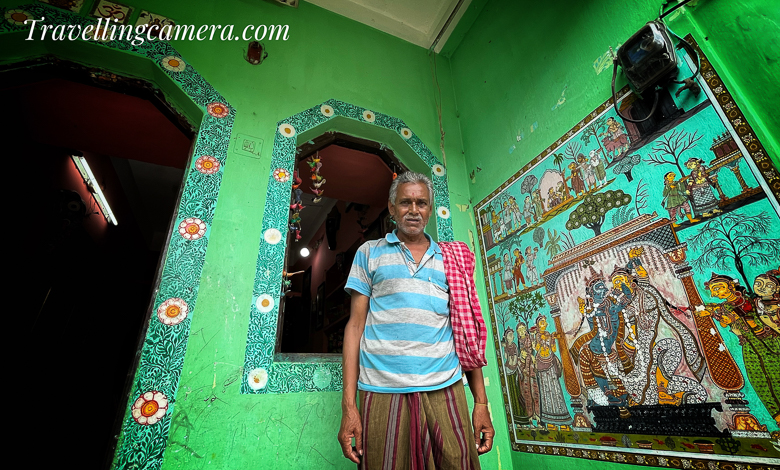
Nestled amidst the lush greenery of Odisha, India, lies the picturesque village of Raghurajpur. Renowned for its rich artistic heritage and traditional craftsmanship, this quaint village has earned the well-deserved title of being a "heritage crafts village." Raghurajpur is a treasure trove of exquisite Pattachitra paintings, masterful stone carvings, vibrant sculptures, and captivating cultural traditions that have been passed down through generations. Let us embark on a journey to explore the enchanting village of Raghurajpur and unravel its artistic legacy.
Historical Significance of Raghurajpur Village:
Raghurajpur holds a significant place in the cultural history of Odisha. The village dates back over a thousand years and is believed to have been established during the reign of the Ganga dynasty. It is closely associated with the Jagannath Temple of Puri, as many of its inhabitants are engaged in the temple's art and craftwork. The village is also known for its association with the Gotipua dance form, an ancient precursor to Odissi classical dance.
The Craftsmen and the Craft of Raghurajpur Village:
Raghurajpur is home to a community of talented artists and craftsmen who have inherited their skills and knowledge from their ancestors. The village boasts a diverse range of crafts, including Tussar silk painting, papier-mâché masks, stone carvings, and wooden toys. The artists take immense pride in their work and are always eager to share their stories and techniques with visitors, offering a glimpse into their intricate creative processes.
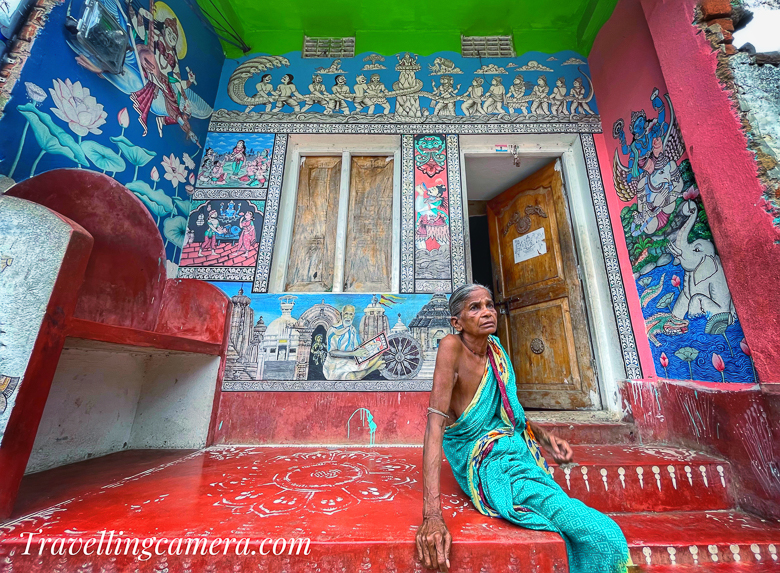
Raghurajpur village in Odisha is renowned for its talented artists who have garnered national and international recognition for their exceptional craftsmanship. The village is home to several esteemed artists who have dedicated their lives to preserving and promoting the traditional art forms of the region. Some notable artists from Raghurajpur include Padma Vibhushan awardee late Jagannath Mohapatra, who was a master Pattachitra painter and a revered mentor for many aspiring artists. Another prominent artist is Rupashree Mohapatra, known for her intricate Pattachitra paintings and expertise in the art of Tussar silk painting. Sudarshan Moharana is a skilled stone carver who has created awe-inspiring sculptures, while the late Laxmidhar Mohapatra was a renowned papier-mâché mask maker. These artists, along with many others in Raghurajpur, have not only elevated the artistic heritage of the village but have also played a significant role in promoting the cultural legacy of Odisha to the world.

Preserving Heritage and Promoting Tourism at Raghurajpur Village:
Recognising the village's cultural significance, the Odisha government and various organisations have taken initiatives to preserve and promote Raghurajpur's heritage. Efforts have been made to provide better infrastructure, training, and marketing support to the artisans. Additionally, the village has gained recognition as a UNESCO Intangible Cultural Heritage site, further boosting its visibility and attracting tourists from around the world.
The walls of houses in Raghurajpur village in Odisha are adorned with breathtaking art paintings that depict the rich cultural heritage of the region. These vibrant and intricate artworks are primarily in the form of Pattachitra paintings, which are traditional cloth-based scroll paintings.
The skilled artists of Raghurajpur meticulously create these murals using natural pigments and organic materials. The paintings often depict mythological stories, religious themes, and scenes from daily life, showcasing the artistic excellence and storytelling prowess of the local artisans. The walls of houses serve as a canvas for these masterpieces, transforming the entire village into an open-air art gallery.
These captivating wall paintings not only beautify the village but also serve as a constant reminder of Raghurajpur's artistic legacy and cultural identity. Visitors to Raghurajpur are treated to a visual feast as they wander through the village, marveling at the stunning artistry that adorns every corner.
As we were walking around the Raghurajpur village, I was not able to resist photographing each homecoming on our way. Every home has beautiful art on the walls with vibrant colours.
Pattachitra & Art on Palm Leaves in Raghurajpur Village:
One cannot talk about Raghurajpur without mentioning Pattachitra, a traditional scroll painting style that originated here. Skilled artisans meticulously create these vibrant paintings on specially treated palm leaves. Pattachitra showcases mythological stories, religious themes, and cultural narratives, often depicting Lord Jagannath and his divine entourage. The intricate brushwork, use of natural pigments, and attention to detail make Pattachitra a true marvel of artistry.
Just look at the wall in above photograph showing one of the houses in Raghurajpur. The details in each graphic are stunning and it looks very similar to artefacts you see in a typical Pattachitra .

During this visit to Raghurajpur, we saw a lot of art-works as each home wanted to invite and show the work to sell. During this we learnt that lot of work which is being sold here is done by students who learn the art in small studios of this village and a few are done by artists who learnt it from their parents. In few minutes we started appreciating the difference of work done by a seasoned artist vs someone who is just learning. And gradually we caught up in a trap that we like those artworks which were very expensive, for the right reasons and the ones which were affordable were not as much impressive 'comparatively'. We ended up not buying anything and didn't feel good about it. Hope we get to visit Rajhurajpur again and we go better prepared about what we want in a defined budget. Just to give you some idea - there are lot of Palm Leaf engravings and Pattachitra available from 500 to 5000 Rs. The ones which have great details and impressive outcome, will cost more than 25000 Rs. These are prices they quoted and we don't know how much of it can be negotiated. May be, we will do some research on this and share back.

The Artistic Village:
As you walk through the narrow lanes of Raghurajpur, you'll be greeted by rows of colorful houses, each adorned with beautiful murals and sculptures. Every house in the village doubles as an art studio, where artisans can be seen engrossed in their craft. The villagers' dedication to their art form is evident as they patiently create awe-inspiring Pattachitra paintings, intricate stone carvings, and stunning sculptures that reflect their artistic prowess.
We had taken Uber from Bhubaneshwar to Puri with 2 stops - one at Pipili and 2nd one at Raghurajpur. Here are more details if you want to visit Raghurajpur from Bhubaneshwar :
By Road:
- Raghurajpur is located approximately 55 kilometers away from Bhubaneswar.
- You can hire a taxi or use a ride-sharing service to travel by road. The journey typically takes around 1.5 to 2 hours, depending on traffic and road conditions.
- You can also consider renting a car if you prefer to drive yourself.
By Public Transportation:
- Take a bus from Bhubaneswar to Puri. Puri is a major city located close to Raghurajpur and is well-connected by buses.
- From Puri, you can hire a local taxi or an auto-rickshaw to reach Raghurajpur, which is around 14 kilometers away from Puri.
- Alternatively, you can take a train from Bhubaneswar to Puri and then proceed as mentioned above.
By Train:
- There is a direct train route between Bhubaneswar and Puri. You can take a train from Bhubaneswar Railway Station to Puri Railway Station.
- From Puri, you can hire local transportation to reach Raghurajpur.
By Air:
The nearest airport to Raghurajpur is Biju Patnaik International Airport in Bhubaneswar.
You can take a flight to Bhubaneswar if you're coming from a distant location, and then proceed by road or train as mentioned above.
Remember to check the current schedules and availability of transportation options before your journey, as they might change over time. It's also a good idea to confirm the route and transportation details locally or through reliable sources to ensure a smooth trip.

When it comes to negotiation in such places, it's important to be respectful and considerate of the local artisans and their work. Here are a few tips:
Respect the Artisans: Keep in mind that the artisans in Raghurajpur put a lot of time, effort, and skill into creating their artwork. Negotiating too aggressively can be seen as disrespectful and undermine their craftsmanship.
Understand the Value: Take a moment to appreciate the value and uniqueness of the artwork. Understand that these pieces are often handcrafted and may not be mass-produced, which adds to their value.
Ask Politely: If you're interested in purchasing an item, ask about the price politely. Inquire about the materials used, the time taken to create the piece, and any special techniques involved. This can also help you understand the fair value of the artwork.
Negotiate Respectfully: If you feel that the initial price is higher than what you're comfortable paying, you can negotiate. However, do so in a respectful and friendly manner. Keep in mind that the artisans depend on their sales to make a living.
Be Reasonable: Offer a reasonable price that reflects your appreciation for the art and the effort put into it. Avoid making extremely low offers that might be considered insulting.
Consider the Market: If you have an idea of the general market prices for similar items, it can help you make a fair offer. Keep in mind that prices in tourist areas might be slightly higher due to increased demand.
Build a Connection: Engage in a friendly conversation with the artisan. Building a connection can sometimes lead to a better understanding of the art and potentially a more flexible price.
Purchase Multiple Items: If you plan to buy multiple items, you might be able to negotiate a better deal. This showcases your genuine interest in their work and can lead to a more favorable negotiation.
Final Price: Once you've reached an agreement, stick to it. It's considered bad practice to agree on a price and then attempt to further negotiate after the deal is settled.
Be Gracious: If you're unable to come to an agreement on price, it's okay to walk away respectfully. Remember that these artisans rely on their craft to make a living, and not every sale will result in a purchase.
Remember, the goal is to appreciate and support the local artisans while making a purchase that you're comfortable with. Always approach negotiations with kindness and consideration for the people and their cultural heritage.
We couldn't negotiate at all as I felt it disrespectful to negotiate with an artist who has put it so much effort in creating a piece of art. I debated this in mind, but I couldn't. What we liked was not fitting out pocket and which was affordable was not looking promising for our walls. But the visit certainly encouraged me to explore more about Pattachitra arts and own one, when something clicks as an art as well as a great visual addition to our walls.
This is a classic challenge when you look to buy art. You can appreciate an art a lot but at the same time you want to be practical about usage of that art in your own space. So it has to fit as an art as well as alignment with your decor, along with fitment in terms of price. The proposition can be very different if you are an Art collector.
Again this photograph doesn't do justice to the art-piece but this one was the most impressive work we saw there. It was extremely costly for us, but the details in each part of Pattachitra were outstanding.

Creating Pattachitra paintings is a meticulous and intricate process that requires skilled craftsmanship. Here's an overview of the traditional process involved in making Pattachitra paintings:
Preparation of the Canvas:
The canvas for Pattachitra paintings is typically a piece of cloth or specially treated palm leaf. The cloth is first washed, starched, and sun-dried to create a smooth surface for painting. The palm leaf is cut into desired sizes and polished to make it suitable for painting.
Outlining the Design:
The artist begins by outlining the design on the canvas using a fine brush or a stylus. The outlines are usually done in black or brown color to create a defined structure for the painting.
Filling Colors:
Once the outlines are complete, the artist proceeds to fill in the colors. Natural pigments are used, which are derived from various sources such as minerals, plants, and shells. These pigments are mixed with natural binders like gum arabic or tamarind seed paste to create a paintable consistency.
Fine Detailing:
After the base colors are applied, the artist adds intricate details to the painting. This includes delicate lines, textures, shading, and highlighting using finer brushes. The precision and attention to detail are crucial in bringing out the richness and depth of the artwork.
Incorporating Traditional Motifs:
Pattachitra paintings often feature traditional motifs such as flowers, birds, animals, deities, and geometric patterns. These motifs hold symbolic significance and are integral to the storytelling aspect of the artwork. The artist carefully incorporates these motifs in a harmonious and balanced manner.
Final Touches:
Once the painting is complete, the artist adds final touches and embellishments. This may include adding gold leaf or foil accents, using natural dyes for vibrant colors, and polishing the surface to give the painting a smooth and glossy finish.
The entire process of creating a Pattachitra painting is labor-intensive and requires immense skill, patience, and attention to detail. It is a beautiful fusion of artistry, mythology, and cultural traditions that have been passed down through generations in Raghurajpur and other regions of Odisha.

Cultural Festivals and Performances at Raghurajpur Village:
Raghurajpur is a hub of cultural activities and celebrations. The village comes alive during festivals like Raja Parba and the annual Pattachitra Mela. During these events, the villagers showcase their artistic talents through vibrant dance performances, music recitals, and traditional plays. Visitors can immerse themselves in the vibrant atmosphere, witnessing the fusion of art, culture, and spirituality that defines Raghurajpur.

The annual Pattachitra Mela in Raghurajpur is a vibrant celebration of art and culture that attracts a large number of visitors from near and far. Held in the village during a specific time of the year, the mela serves as a platform for the local artisans to showcase their exquisite Pattachitra paintings and other traditional crafts to a wider audience.
Showcasing Artistic Excellence:
During the Pattachitra Mela, the artisans of Raghurajpur display their finest creations, ranging from intricate Pattachitra paintings to palm leaf engravings, Tussar silk paintings, stone carvings, wooden toys, and papier-mâché masks. The mela provides a unique opportunity for visitors to witness the diversity and exceptional artistry of the village's craftsmen.
Cultural Performances:
Alongside the art exhibitions, the Pattachitra Mela is also known for its lively cultural performances. Traditional music, folk dances, and theatrical plays are organized to entertain the visitors. The performances often depict mythological stories and historical events, offering a glimpse into the rich cultural heritage of Odisha.
Interaction with Artisans:
One of the highlights of the mela is the chance to interact directly with the artisans. Visitors can engage in conversations with the artists, observe their creative processes, and even participate in workshops where they learn the techniques of Pattachitra painting and other crafts. This interaction allows for a deeper understanding of the art forms and fosters a connection between the creators and appreciators of art.
Sales and Souvenirs:
The Pattachitra Mela provides an excellent opportunity for visitors to purchase authentic artworks directly from the artisans. The mela serves as a marketplace where visitors can explore a wide variety of handmade crafts and take home a piece of Raghurajpur's artistic legacy. It is a chance to support the local artists and contribute to the preservation of their traditional livelihoods.
Promoting Tourism and Cultural Exchange:
The Pattachitra Mela plays a crucial role in promoting tourism in Raghurajpur and the state of Odisha. The event attracts art enthusiasts, scholars, researchers, and tourists who are eager to explore the village's artistic treasures. The mela also serves as a platform for cultural exchange, as visitors from different parts of India and the world get the opportunity to immerse themselves in the local traditions and customs.
The annual Pattachitra Mela in Raghurajpur is a testament to the village's commitment to preserving its artistic heritage and promoting cultural tourism. It showcases the immense talent and creativity of the artisans while providing a memorable experience for all who attend. The mela not only celebrates the art forms of Raghurajpur but also serves as a platform for cultural dialogue and appreciation, contributing to the wider recognition and appreciation of Odisha's artistic traditions.
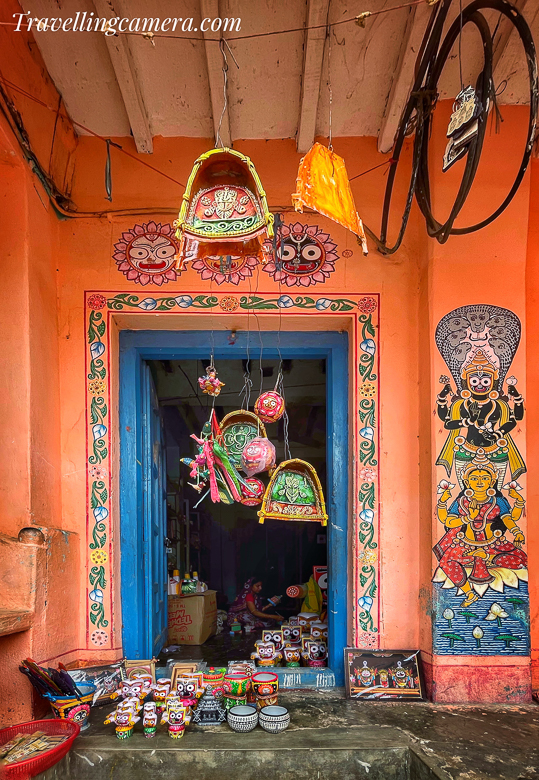
During the visit to Raghurajpur, I got to know that many NGOs with businesses work with artists from this village to sell the work they produce. It was so good to know that. At times, Artists are not good sales people so this kind of intervention helps in multiple ways. So retain these art-forms and make them sustainable, it's important to bridge the gap of demand-supply with right distribution channels and pricing models. I know, at times artists feel cheated in this whole scheme when middle layer makes more money. But that's the harsh reality. The remaining option is to learn yourself about how to sell. If you are creating an Art and unable to sell it, it's will be hard to sustain and gradually we end up losing that art/culture.
These sights were the most beautiful where Artists were working on their next set of art-pieces. Here is another National Award winner from Rajhurajpur working on relatively small size Pattachitra of Jagannath Ji.
In Raghurajpur village, one can spend whole day seeing and exploring their artwork. Each small house is full of so many of them. Many times, we had to say no respectfully as we had to head to Puri on time due to other commitments. So if you have a complete day to spend in Raghurajpur, go ahead and do it. Specially people who appreciate art will simply love this surrounding. Doesn't really matter if you buy or not. Recommendation is that you buy something to support these Artists.
Here is another artist from Raghurajpur village who is also national awardee. I had captured his name in my notes and misplaced somewhere. I I will try to find and add more about it.
Here is a photograph of tray with all kinds of colours used for making Pattachitra artwork. Most of these used to be created through natural sources but some of the conversations with artists also revealed that artificial colours are also bought from market these days.
There is one annoying part of Raghurajpur Village that as you enter the village, lot of boys start chasing you and invite you to their house for showing art-work. I understand that one needs to market but there should be some level of limit which can be done in better way. I wish some NGO also spend some time with these families to train them on how to approach tourists/guests, interact and make the sale.
In most of the families, there are Odiya speaking people. Young boys can interact in Hindi and hence they become the front face, but not all of them know that well about the Art, so this gap is another hinderance in making sale happen. Probably I am being too judgemental here but I wish they evolve to a level where they do more sales with less efforts on dragging people into their houses. Like we were useless for them, as we didn't buy anything. But the amount of time many of them spent on us was too much.
During this visit, we happened to walk inside a shop where we met son of National Awardee Biswanath Swain. Above photograph shows his son. When I started finding more about Biswanath Swain on internet, I was extremely sad to not find enough and hence decided to dedicate a separate blogpost about Biswanath Swain and his work in the field of Pattachitra artform. He was given National Award in 2015 (Palm Leaf Engraving) and more artists from Odisha can be found here.
Above photograph shows work by Biswanath Swain. This was a huge piece of art and unfortunately photograph doesn't do justice. But If you zoom into it and look at the details, you will be amazed.
Above photograph shows door designed by Biswanath Swain's father and is still an exceptional visual in whole Raghurajpur village.

Odisha is a treasure trove of traditional art forms, and several villages in the state are renowned for their artistic heritage. Here are some other famous villages in Odisha known for their traditional art forms:
Saura Tribal Village (Golamunda): Located in the Kalahandi district, Golamunda is known for the ancient and unique Saura tribal art form. The Saura artists paint vibrant geometric patterns and mythical figures on walls, floors, and cloth, reflecting their deep connection with nature and tribal folklore.
Pipili (we visited Pipili as well and blogpost is available on Travellingcamera): Situated near Puri, Pipili is famous for its intricate appliqué work. Skilled artisans create stunning appliqué designs using vibrant fabrics, which are then used to adorn canopies, umbrellas, wall hangings, and other decorative items. The village is particularly renowned for its appliqué work during the annual Jagannath Rath Yatra in Puri.
Nuapatna: Located in Cuttack district, Nuapatna is celebrated for its traditional handloom weaving. The village specializes in producing beautiful textiles, particularly the Ikat sarees and fabrics. The intricate patterns and vibrant colors of Nuapatna textiles are a testament to the skill and creativity of the weavers.
Maniabandha: Situated in the Kendrapara district, Maniabandha village is famous for its tie and dye textile art known as Bandha. The artisans create stunning designs by tying and dyeing threads before weaving them into sarees, dress materials, and other textiles. The village is particularly known for its unique and intricate "Khandua" sarees.
Raghurajpur: As discussed earlier, Raghurajpur is renowned for its Pattachitra paintings and other traditional art forms, making it one of the most famous villages in Odisha for its artistic heritage.
These villages, along with many others across Odisha, serve as cultural hubs where traditional art forms are nurtured, preserved, and showcased. They offer visitors a chance to witness the artistic brilliance of the local communities and experience the rich cultural tapestry of Odisha.

Raghurajpur village stands as a shining example of India's rich artistic heritage and the preservation of traditional craftsmanship. Its narrow lanes, vibrant murals, and skilled artisans create a mesmerizing experience for visitors. A visit to Raghurajpur is not just an opportunity to witness extraordinary art forms but also a chance to support the livelihoods of the talented individuals who carry forward these traditions. As the village continues to thrive, it serves as a testament to the power of art in bridging the gap between the past and the present, and in preserving the cultural legacy for future generations to cherish.
Here is an interesting blog on Raghurajpur by Abhinav Singh, a very well respected Travel Blogger in India and abroad.
Related Blogposts :







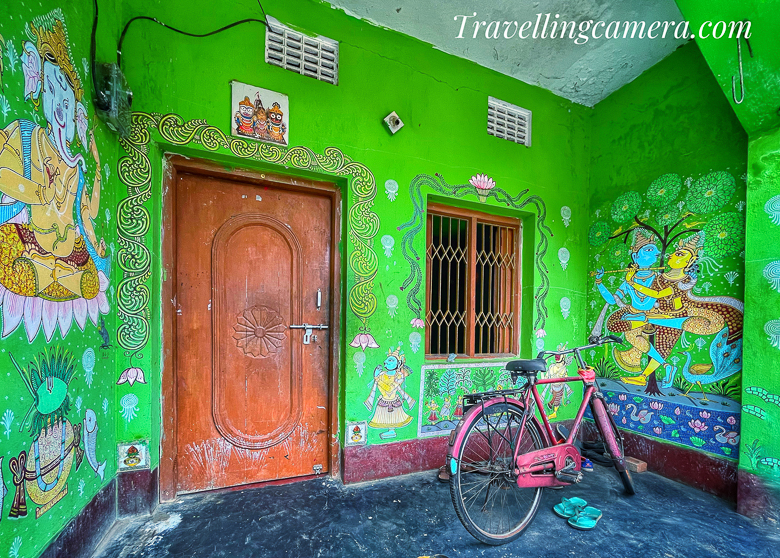











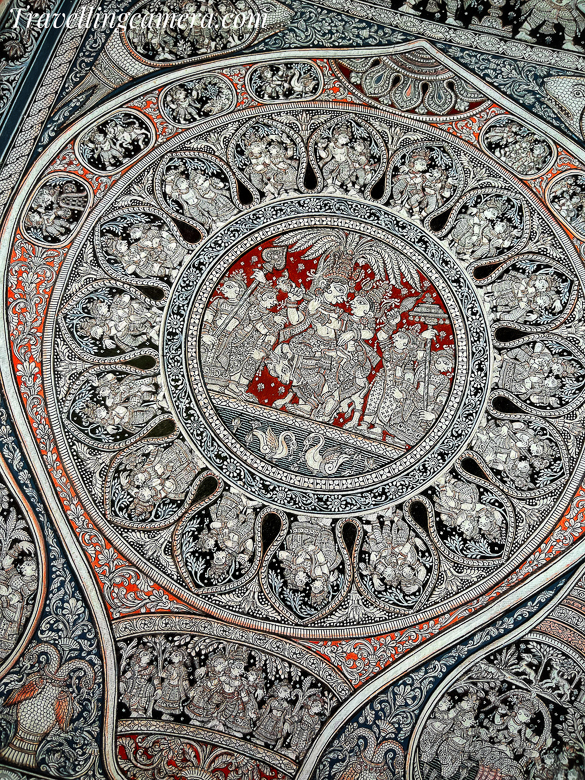





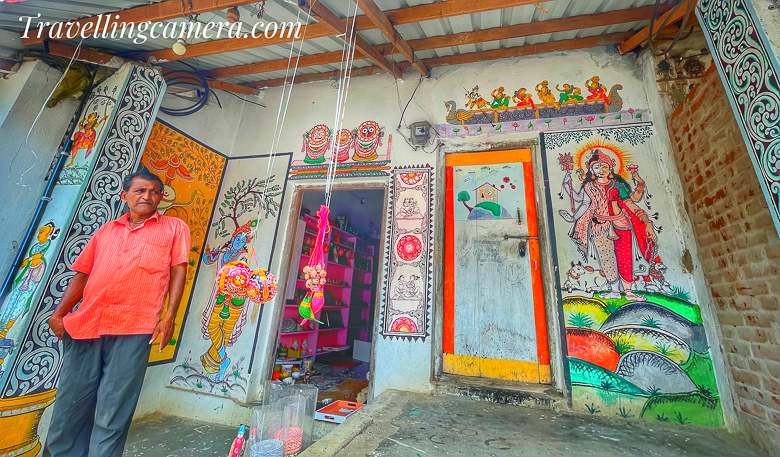


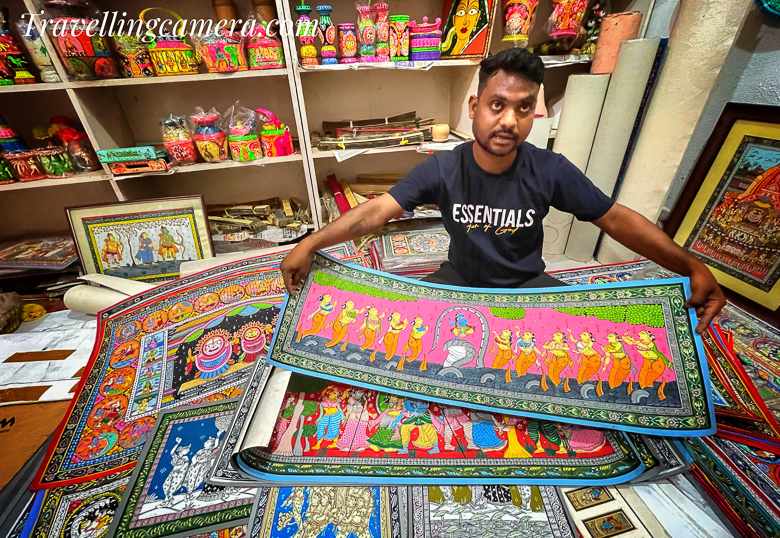
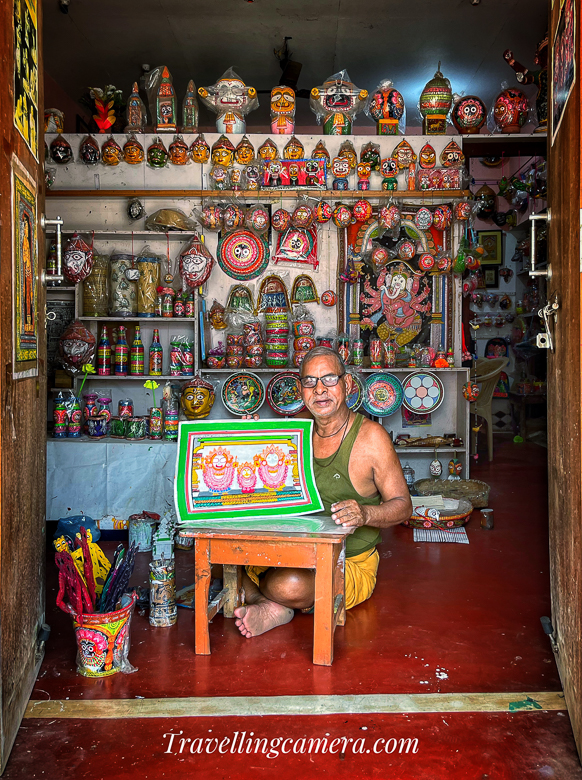


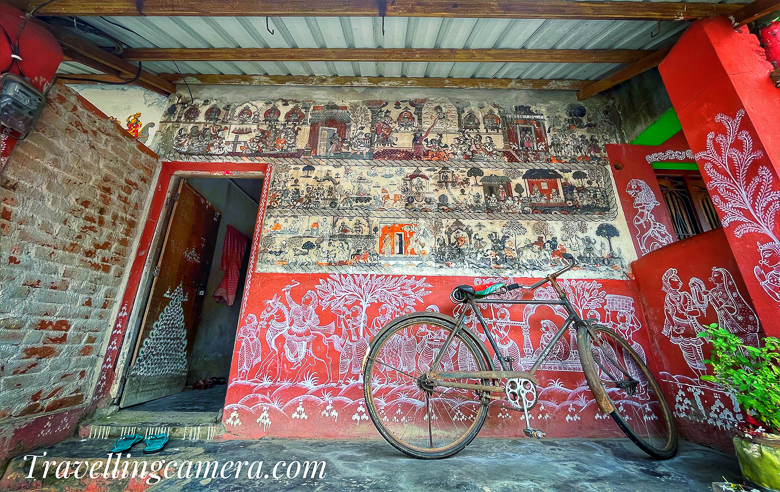








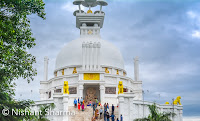



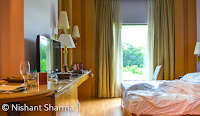
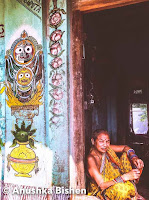

.jpg)
Comments